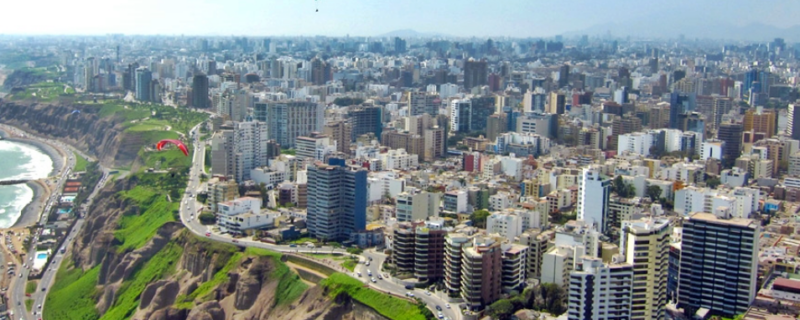The “Other” Latin America
The formal launching of CELAC revealed the strength of regionalism in Latin America.
A Daily Publication of The Dialogue
Latin America and the Caribbean are forecast to see economic growth of 1.5 percent next year, slightly below the 1.7 percent expected for this year, the United Nations Economic Commission for Latin America and the Caribbean said Sept. 5 in its annual Economic Survey. That level is below the 3 percent global growth level that the International Monetary Fund expects for 2024. What are the main factors holding back the economies of Latin America and the Caribbean? In the region, which economies will do best, and which will lag behind in the coming year? Which industries will thrive in the year ahead and which will struggle, and why?
Pedro Francke, former Peruvian finance minister: “Latin America has had lower growth than the world average over the last four decades, a performance aggravated after the international financial crisis of 2009. It was also a region hit especially hard by Covid-19, in terms of mortality and GDP. So, unfortunately, the low growth projections for this year and next are not a surprise, none of the six large Latin American economies shows significant growth for 2023 and 2024 and, except for the rebound in tourism, no sector stands out with greater dynamism. There are short-term factors in this situation, such as increased interest rates for anti-inflationary purposes, the higher cost of debt and fiscal adjustments focused on reducing expenditures. Together, they configure a framework of contractionary macroeconomic policies that could be reviewed, especially when inflation shows a clear downward trend. There are also important long-term reasons for this low growth. One is the lack of innovation and technological development, a product of weak and inefficient industrial policies, the absence of growth strategies that last over time and a business community largely oriented toward rent-seeking. Another is historically high inequality, especially in education and health, which are fundamental to raising human capital. Finally, political instability and deterioration of democracy, with governments of very different orientations alternating in power with profound internal conflicts, increased corruption and crime.”
Joydeep Mukherji, managing director of Latin American Sovereign Ratings at Standard & Poor’s in New York: “Growth is a long-term challenge for Latin America. According to Inter-American Development Bank data, per capita GDP growth was 1.8 percent on average between 1990 and 2019, compared with 3.5 percent in emerging Asia and 1.7 percent in advanced countries. Much of the growth in the region was due to higher inputs of labor, followed by improved skills. By contrast, increases in total factor productivity and in the capital stock have accounted for just over half the growth seen in Asia. The failure of Latin America to boost productivity despite many years of structural reform, including trade liberalization, reflects deep-seated political obstacles, social weaknesses and often poor leadership. Beneath the gloomy region-wide numbers, there is some diversity. For example, Panama has grown at an average pace of 5.3 percent since 2000, followed by the Dominican Republic at 4.8 percent and Peru at 4.4 percent. The success of some countries in growing faster indicates that nothing is inevitable. In fact, global population growth and more use of renewable energy provides opportunity, especially for South America, to strengthen economic growth prospects, thanks to favorable long-term demand for food and minerals such as lithium, copper and silver. The region’s farms can also meet growing demand for food, thanks to fertile lands and abundant water in many countries. Latin America’s history suggests skepticism about its ability to take full advantage of commodity cycles, which often encourage populism and bad policies. However, carefully designed fiscal, monetary and other policies can moderate the ups and downs of commodity price cycles and sustain stable economic performance.”
Vangie Bhagoo-Ramrattan, head of the economic research unit at First Citizens in Port-of-Spain, Trinidad and Tobago: “Caribbean economic prospects are highly dependent on the global economy as most of the region relies heavily on sectors that are primarily driven by the external environment. The World Travel and Tourism Council estimated that travel and tourism accounted for approximately 12 percent of the total Caribbean economy in 2022. The sector also substantially contributes to the labor market, providing around 15 percent of jobs in the region. While many countries have recouped the economic losses of the pandemic, the region faces significant economic headwinds given several factors in the global environment that taint the outlook. The culmination of relatively high global inflation, tighter monetary policies and withdrawal of fiscal stimulus will affect the demand for tourism and travel in the region. The higher cost of travel may also impede the growth of the Caribbean tourism sector, particularly because many Caribbean countries operate a fixed-exchange framework, pegged to the U.S. dollar, which has been strong due to higher U.S. interest rates. This makes Caribbean vacations less competitive relative to countries that operate a floating exchange rate. The threat of higher fuel and food prices is another headwind to the Caribbean’s outlook, as it will place additional pressure on already onerous external imbalances. Further, the inherent threat of natural disasters places a significant burden on the region’s fiscal sustainability as well as economic growth prospects. As the countries of the region also consolidate fiscal accounts in the aftermath of the pandemic, spending may be curtailed, which is also likely to curb aggregate demand and overall economic activity. The Caribbean is home to small and extremely open economies with narrow economic and revenue bases. Lack of fiscal flexibility, high indebtedness—worsened by the incremental need for government spending during the pandemic and low economic growth—have challenged the region for decades. And while many of the countries have made progress in addressing these issues through the implementation of fiscal responsibility frameworks and other key economic reforms under IMF programs, getting closer to potential or trend growth will require discipline and execution of critical policy.”
Scott MacDonald, chief economist at Smith’s Research and Gradings and fellow at the Caribbean Policy Consortium: “In the last several years, Latin America and the Caribbean were hard hit by Covid-19, inflationary pressures caused by the Russo-Ukrainian War and U.S. Federal Reserve interest rate hikes, Sino-American trade tensions, and an elevated level of political risk. The results were high inflation, slow growth, sizable fiscal deficits and more onerous debt loads for several countries (Argentina and Ecuador stand out in this regard). Many of the above factors are likely to continue into 2024. The region’s challenges are structural and related to the need to digitalize at a greater speed as well as accelerate the development of human capital necessary to handle such a transition. Further efforts are needed to reduce an enduringly uneven distribution of income, improve personal security and determine how to finance the energy transition to renewables, which is critical to dealing with climate change. Yet another drag on regional growth is China’s cooling economy. There may be some silver linings in the dark clouds. Although China’s growth is cooling, it remains a major purchaser of Latin America’s energy and food. The scramble for critical metals (such as lithium and copper) needed for the global energy transition is resulting in an uptick in new foreign investment in Argentina, Brazil, Bolivia and Chile. In the Caribbean, Guyana, one of the world’s newest petrostates and expected to achieve a 38 percent growth rate in 2023, is well-placed to ride the uncertainties in 2024, as is the Dominican Republic. U.S. growth is expected to slow in 2024, but this could bring interest rates down, potentially loosening capital markets, helping Latin America. One major factor for Latin America that will become increasingly pronounced in 2024 and beyond is its role in the great energy transition, due to its holding many of the key ingredients for the future.”
 The Latin America Advisor features Q&A from leaders in politics, economics, and finance every business day. It is available to members of the Dialogue’s Corporate Program and others by subscription.
The Latin America Advisor features Q&A from leaders in politics, economics, and finance every business day. It is available to members of the Dialogue’s Corporate Program and others by subscription.
The formal launching of CELAC revealed the strength of regionalism in Latin America.
What are Caricom’s greatest achievements? Could closer integration benefit the region and, if so, what steps would have to be taken to achieve it?
Regional integration, social inclusion, and the need for a more competitive business climate—discussed at the XVIII Annual CAF Conference
 Latin America and the Caribbean are expected to see lower growth than the world average next year. Lima is pictured.
File Photo: Vengador1 via Creative Commons.
Latin America and the Caribbean are expected to see lower growth than the world average next year. Lima is pictured.
File Photo: Vengador1 via Creative Commons.
 Video
Video